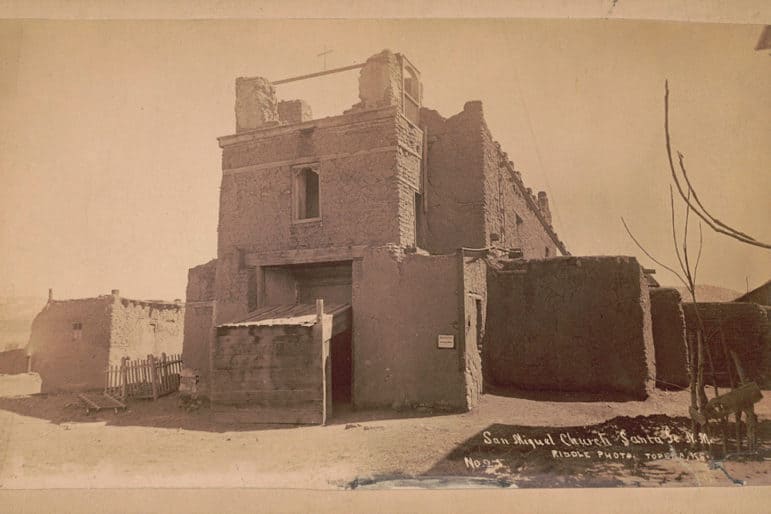
Library of Congress
San Miguel Church of Santa Fe is among the old adobe structures built in part by the Genízaros people.
As explorers and settlers moved west across what would become the United States in the generations before and after its birth, tribes were scattered, pitted against one another, and in some cases destroyed entirely. For the Genízaros people in the Southwest, the result is a modern-day push for recognition in history books, let alone as a tribe and a distinct people.
Fighting for recognition, at times for basic humanity, has become a part of Native identity in this country. As Roxanne Dunbar-Ortiz wrote in An Indigenous Peoples’ History of the United States, “Today’s Indigenous nations and communities are societies formed by their resistance to colonialism, through which they have carried their practices and histories. It is breathtaking, but no miracle, that they have survived as peoples.”
The Genízaros are not a federally recognized tribe and are rarely referenced in the recorded histories of the New Mexico deserts. That’s because more than 150 years ago their ancestors were kept as slaves by Hispanic families and even federal agents, although the practice was illegal. Many were the descendants of captured Utes, Comanches, Apaches, Kiowas and Pawnees, and were named after a fierce group of Spanish slaves made to fight for their freedom. When the Mexican republic emerged in 1821, it did away with the term Genízaros to shed the history of the caste system. The Genízaros were converted to Catholicism and intermarried, over time becoming part of Hispanic communities. Intermarriage and assimilation of the Genízaros was so widespread that countless people in New Mexico likely don’t realize their ancestry can be traced to slavery.
It’s part of a history and identity, not unlike struggles elsewhere against tribal disenrollment and the practice of blood quantum. For Indigenous peoples in the Southwest, some are only now confronting these things after generations of their people have lived in a place that tried to forget them.
Among those working to establish their history is Gregorio Gonzales, who identifies as Genízaros. Gonzales is a postdoctoral fellow at the University of California Santa Barbara, and he said archeologists, anthropologists and historians have done a disservice to the legacy of his people and ignored their continued existence. “’If we can’t find Genízaros in the census then they must not exist,’” Gonzales said in a 2016 lecture at the University of New Mexico, describing that mentality. “I clearly disagree with that.”
But Genízaros communities in the Taos Valley are distinct in their traditions and culture, he said, and they have been carrying them on for generations. “It’s how we belong to this valley that doesn’t even recognize our existence.”
The legacy that endures is the idea that all Hispanics look one way and all Native peoples look another, Gonzales said.
As Moises Gonzales, UNM professor and co-editor of a new book on the Genízaros, told NPR, “The Spanish fantasy is a myth,” and it’s time to finally have a conversation about what it means to be Genízaros.
Recently, there has been a significant shift in the way Americans talk about race, identity and representation, and as we continue to trace and more fully understand our histories, it becomes not only more possible but necessary to know who we are and what that means.
Graham Lee Brewer is a contributing editor at High Country News and a member of the Cherokee Nation.